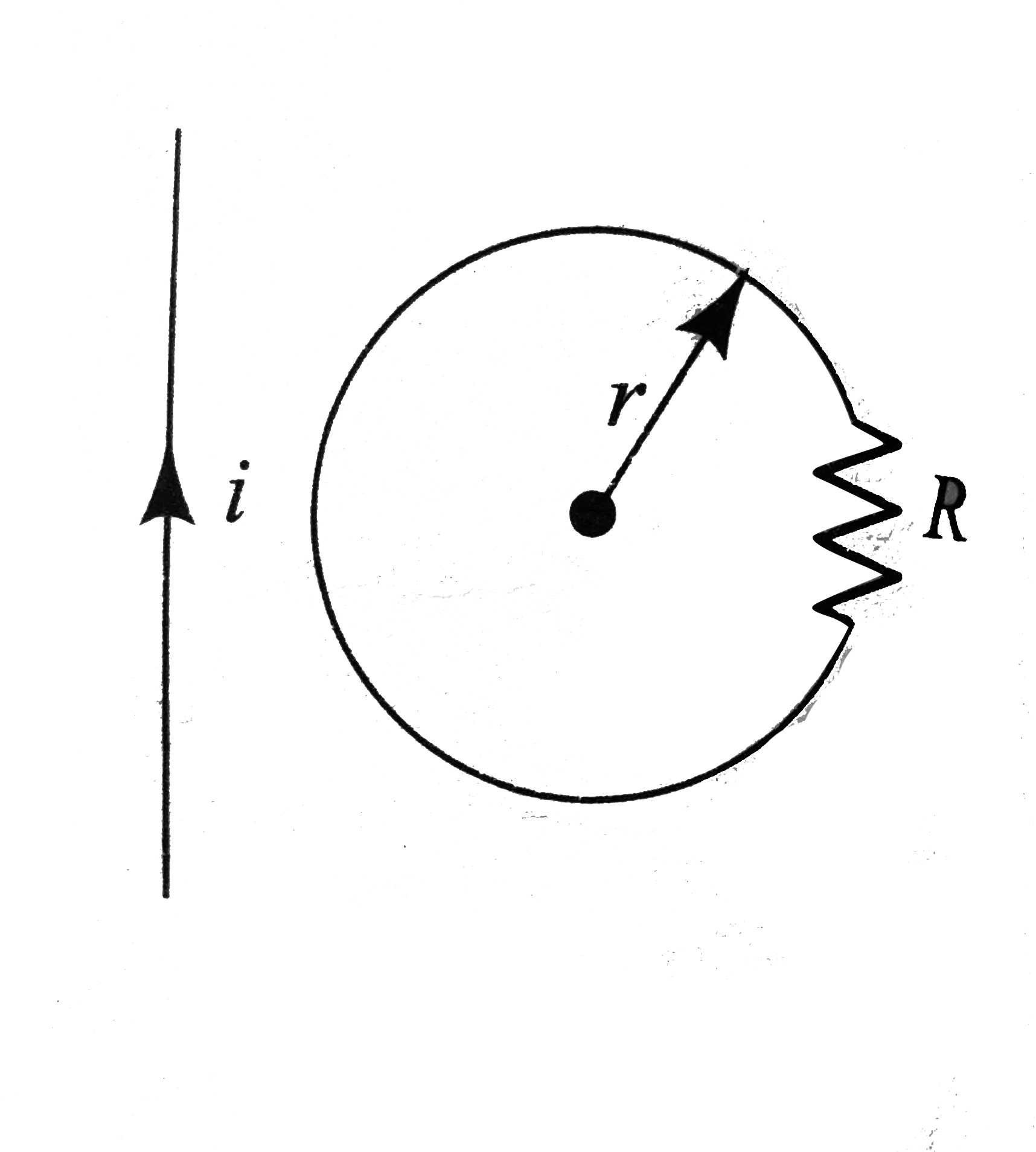In an inductor of self-inductance L=2 mH, current changes with time according to relation i=t2e−t. At what time emf is zero ?
4s
3s
2s
1s
The correct Answer is:C
To solve the problem, we need to find the time at which the electromotive force (emf) in the inductor is zero. The current i(t) is given as i=t2e−t, and the self-inductance L is given as 2mH.
1. Understand the relationship between emf and current:
The induced emf (E) in an inductor is given by the formula:
E=−Ldidt
where L is the self-inductance and didt is the rate of change of current with respect to time.
2. Differentiate the current function:
To find didt, we need to differentiate the current function i(t)=t2e−t with respect to t. We will use the product rule for differentiation:
didt=ddt(t2)⋅e−t+t2⋅ddt(e−t)
The derivatives are:
- ddt(t2)=2t
- ddt(e−t)=−e−t
Thus,
didt=2te−t+t2(−e−t)=2te−t−t2e−t
This simplifies to:
didt=e−t(2t−t2)
3. Substitute into the emf equation:
Now we substitute didt into the emf equation:
E=−Ldidt=−2×10−3⋅e−t(2t−t2)
4. Set the emf to zero:
To find the time when the emf is zero, we set the equation to zero:
−2×10−3⋅e−t(2t−t2)=0
Since e−t is never zero, we can simplify to:
2t−t2=0
5. Factor the equation:
This can be factored as:
t(2−t)=0
This gives us two solutions:
t=0or2−t=0⟹t=2
6. Determine the valid solution:
Since t=0 is not a valid time for the emf to be zero in the context of this problem, we take:
t=2seconds
Final Answer:
The time at which the emf is zero is t=2seconds.
The induced emf (E) in an inductor is given by the formula:
E=−Ldidt
where L is the self-inductance and didt is the rate of change of current with respect to time.
To find didt, we need to differentiate the current function i(t)=t2e−t with respect to t. We will use the product rule for differentiation:
didt=ddt(t2)⋅e−t+t2⋅ddt(e−t)
The derivatives are:
- ddt(t2)=2t
- ddt(e−t)=−e−t
didt=2te−t+t2(−e−t)=2te−t−t2e−t
This simplifies to:
didt=e−t(2t−t2)
Now we substitute didt into the emf equation:
E=−Ldidt=−2×10−3⋅e−t(2t−t2)
To find the time when the emf is zero, we set the equation to zero:
−2×10−3⋅e−t(2t−t2)=0
Since e−t is never zero, we can simplify to:
2t−t2=0
This can be factored as:
t(2−t)=0
This gives us two solutions:
t=0or2−t=0⟹t=2
Since t=0 is not a valid time for the emf to be zero in the context of this problem, we take:
t=2seconds
The time at which the emf is zero is t=2seconds.
Topper's Solved these Questions
- PRACTICE PAPPERBOOK - NCERT FINGERTPS ENGLISHCHAPTER - PRACTICE PAPPEREXERCISE - Practice Papper 3
50 Videos
- PRACTICE PAPPERBOOK - NCERT FINGERTPS ENGLISHCHAPTER - PRACTICE PAPPEREXERCISE - Practice Paper 1
50 Videos
- PRACTICE PAPPERBOOK - NCERT FINGERTPS ENGLISHCHAPTER - PRACTICE PAPPEREXERCISE - Practice Paper 3
50 Videos
- NUCLEIBOOK - NCERT FINGERTPS ENGLISHCHAPTER - NUCLEIEXERCISE - Assertion And Reason
15 Videos
- RAY OPTICS AND OPTICAL INSTRUMENTSBOOK - NCERT FINGERTPS ENGLISHCHAPTER - RAY OPTICS AND OPTICAL INSTRUMENTSEXERCISE - NCERT Exemplar
11 Videos
Similar Questions
Knowledge Check
The energy stored in an inductor of self-inductance L henry carrying a current of I ampere is
A12L2IB12LI2CLI2DL2I
In an inductor of inductance L=100mH, a current of I=10A is flowing. The energy stored in the inductor is
View SolutionIn an inductor of inductance L=100mH, a current of I=10A is flowing. The energy stored in the inductor is
View SolutionThe inductors of self inductance L1 and L2 are put in series .
View SolutionThe energy stored in an inductor of self-inductance L henry carrying a current of I ampere is
View SolutionIn a certain circuit current changes with time according to i=2√t RMS value of current between t=2s to t=4s will be
View SolutionIn a cirtain circuit current changes with time according to i=√t. Average value of current betweent=1 to t=2s is about to
View SolutionIn Fig, the mutual inductance of a coil and a very long straight wire is M, coil has resistance R and self-inductance L. The current in the wire varies according to the law I=at, where a is a constant and t is the time, the time dependence of current in the coil is

View Solution